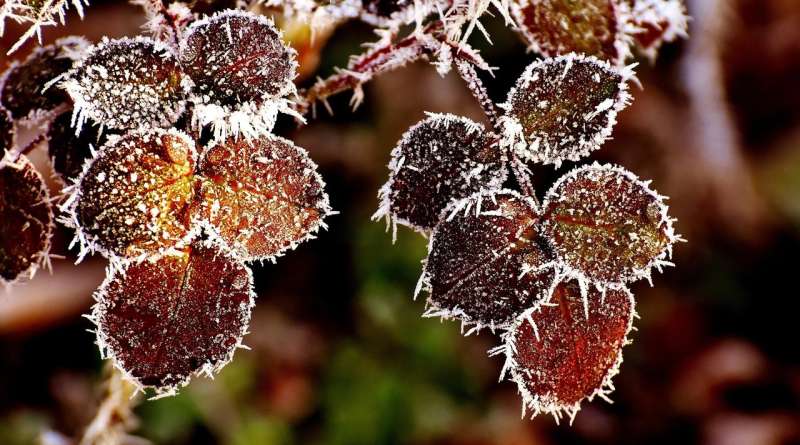Credit: CC0 Public Domain
Machine learning can be used to forecast when a geographical region might have a ground frost, according to new work published in the International Journal of Reasoning-based Intelligent Systems. Weather forecasting for a specific phenomenon, such as frosts, is important for farmers, horticulturists, and others who need to know whether there will be a likely risk to crops, such as fruit trees and vines as well as to produce temporarily stored outside. Similarly, road safety might be improved given better forecasts of the likelihood of frost or ice on the roads.
Liya Ding, Yosuke Tamura, Kosuke Noborio, and Kazuki Shibuya of Meiji University in Kawasaki, Japan, have in previous work investigated the cause and effect that inevitably lead to a frost where minute-level data from sensors can be fed to an algorithm and return an accurate forecast. In the current paper, they discuss further their methods for modeling the formation of frost. Among these methods are causal and associative models. They also propose a framework for a hybrid system that can provide a short-term frost forecast over several hours and demonstrate how it might be used to predict whether a region will experience a frost several days in the future.
There are essentially two types of frost. There is frozen dew (water frost). This occurs when water vapor from the atmosphere condenses as dew on a surface, such as a leaf when the temperature drops below the dew point but above water's freezing point, but the leaf surface temperature then falls below freezing cause the dew to solidify. The second type of frost is depositional frost (white frost) which forms when the surface temperature is initially below freezing and so rather than condensing on a surface and subsequently freezing, water from the atmosphere deposits as a solid on the surface.
Air temperature is usually used as a simple predictor, the team points out, but the spatial resolution of data that might be obtained is not always sufficiently high especially in remote farms. Moreover, temperature is not the only factor that influences whether or not a frost forms. Other parameters such as humidity, wind speed and direction, cloud cover, also have an influence. Ultimately, whether or not a frost occurs can be seen to be an accumulation of factors preceding a given time. Machine learning tools with their ability to assimilate and process data of various sorts and through an algorithm find a likely answer to a given question could offer a more timely forecast.
The team's new model can offer a minute-by-minute forecast of frost with a one to three hour alarm to warn anyone who needs advance warning of frost.
More information: Liya Ding et al, Frost forecast - a practice of machine learning from data, International Journal of Reasoning-based Intelligent Systems (2021). DOI: 10.1504/IJRIS.2021.118642
Provided by Inderscience
























